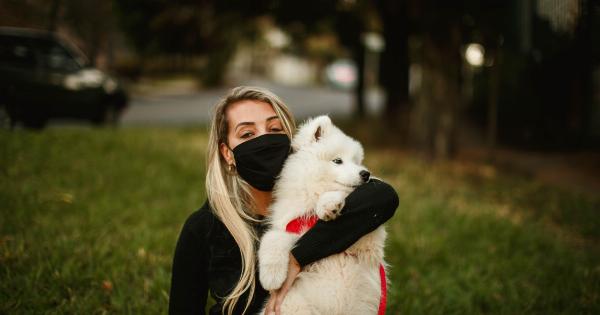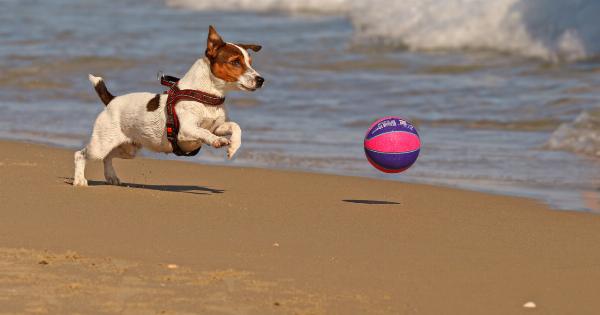The beach is a wonderful destination for bonding with your furry companion. The refreshing ocean waves, the soft sand beneath your toes, and the opportunity for your pup to run freely are just a few of the delights that await you.
However, as with any adventure, it is crucial to prioritize safety. In this article, we will explore how to ensure a safe and enjoyable beach trip for your four-legged friend.
1. Choosing the Right Beach
Not all beaches are created equal when it comes to accommodating pets. Some beaches have specific zones for dogs, while others may have restrictions on certain days or times. Research local rules and regulations regarding pets before heading out.
Additionally, consider the beach’s access points, parking availability, and amenities such as water fountains or shaded areas. These factors can greatly contribute to your pup’s comfort and safety.
2. Assessing Your Pup’s Swimming Abilities
While many dogs possess natural swimming instincts, not all are strong swimmers. Take the time to evaluate your pup’s swimming abilities before allowing them to venture into deeper waters.
Start by introducing them to shallow water and observe their comfort level. If they seem hesitant or struggle to stay afloat, consider using a doggy life vest to provide extra buoyancy and ensure their safety.
3. Monitoring Water Quality
Before you and your pup dive into the waves, it’s important to check the water quality. Some beaches may be contaminated with pollutants or harmful bacteria, which can lead to various health issues for both you and your pet.
Keep an eye out for any warnings or advisories issued by local authorities regarding water quality. If in doubt, consult your veterinarian for advice on whether it is safe for your pup to swim in a particular area.
4. Protecting Against Sunburn
Just like humans, dogs can suffer from sunburn. Certain breeds with thin or light-colored coats, and those with exposed skin areas, are particularly prone to sunburn.
To protect your pup, apply pet-friendly sunscreen to their nose, ears, belly, and any other areas that are exposed to direct sunlight. Additionally, providing shade with an umbrella, beach tent, or canopies can help keep your furry friend cool and shielded from harmful UV rays.
5. Hydration is Key
Spending time at the beach can be physically demanding for your pup, especially if they are running and playing in the sand. Ensure access to fresh water throughout your beach trip by bringing a portable water bowl and plenty of drinking water.
Hydration is crucial for preventing heatstroke and ensuring your pup’s well-being during their outdoor adventures.
6. Avoiding Hot Sand
On scorching summer days, the sand can heat up to extreme temperatures, causing discomfort and burns on your pup’s paw pads. Before heading to the beach, touch the sand with the back of your hand to determine if it’s too hot for your pup.
If it feels too warm, consider bringing dog booties or protective paw balm to shield their paws from the heat. Alternatively, plan your beach trip for cooler times of the day, such as early morning or late afternoon.
7. Keeping a Watchful Eye
Even well-trained dogs can get excited and carried away in stimulating environments like the beach. Always keep a close eye on your pup to ensure they don’t wander off, become overwhelmed, or get into potentially harmful situations.
Be mindful of other beachgoers, wildlife, and any hazards that may pose a threat to your furry friend.
8. Time for Play, Time for Rest
Beach activities can be exhausting for your pup, so it’s essential to offer them regular breaks and opportunities to rest. Pack a comfortable beach towel or mat where your pup can relax in the shade.
Encourage them to take breaks from running and swimming to recharge their energy levels and prevent overexertion.
9. Cleaning Up After Your Pup
Responsible pet owners understand the importance of cleaning up after their furry companions. Always bring waste disposal bags to the beach and promptly collect any dog waste.
Not only is it considerate to other beachgoers, but it also helps maintain a clean and safe environment for everyone.
10. Rinse and Dry
Once your beach adventure is over, it’s crucial to rinse off your pup to remove any saltwater, sand, or debris from their fur. Leaving these substances on their skin for extended periods can lead to skin irritations and other related issues.
Dry your pup thoroughly with a towel to prevent chills and potentially harmful bacteria growth.
By following these guidelines, you can ensure a safe and memorable beach trip for both you and your furry companion.
Remember, the key is to prioritize your pup’s well-being and keep their safety at the forefront of your mind throughout the entire experience.






























